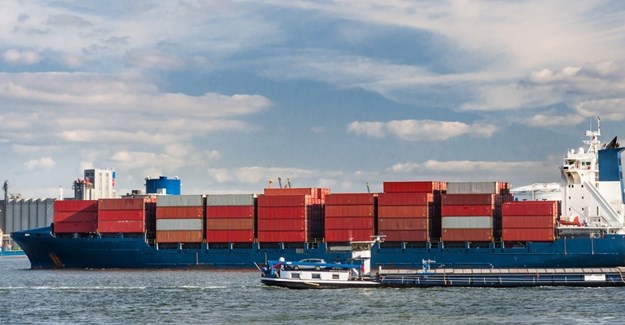South Africa’s agricultural sector is export-orientated. Nearly half of the annual produce, in value terms, is exported in regular and good seasons. The 2020/21 season has been one such season, producing the second consecutive strong output performance, with an even larger harvest for major field crops, horticulture and the wine industry than in 2019/20. This robust production could boost exports to surpass the 2020 level of US$10,2 billion.
For example, in the first quarter of 2021, agricultural exports amounted to US$2,9 billion, which is a 28% year-on-year (y/y) increase. We now have the full data for the second quarter which showed an even stronger performance with exports valued at US$3,2 billion, up 36% y/y. This means that in the first half of 2021, South Africa’s agricultural exports amounted to US$6,1 billion, which is a 30% y/y increase. Compared with last year, the growth is partly because of base effects, as the first half of 2020 was heavily affected by the Covid-19 related disruptions to global supply chains. Still, the growth reflects rising export performance for various products.
In the second quarter of this year, the top exportable products were citrus, apples and pears, maize, wine, grapes, pineapples and avocados, wool, and nuts, amongst other products. These products will likely continue dominating the export list in the second half of the year; thanks to large production volumes. There were temporary delays in exports in the port of Durban at the start of July because of unrest. Moreover, later in July, there were additional brief delays in export activity across South Africa following IT glitches on Transnet systems. This will likely be reflected in the third quarter export trade activity. However, this does not change my view that exports could be larger in 2021 than the previous year because of the robust harvest.
To illustrate this point, consider the data from the South African Wine Industry Information and Systems, which estimated the 2021 wine grape crop at 1,5 million tonnes, 9% larger than the 2020 harvest. While there was a temporary ban on alcohol sales domestically, the exports continued for those entities with access to export markets, thus contributing to an increase in exports this year. The Citrus Growers’ Association forecasts South African citrus exports at a record 159 million cartons for this year, up by 9% from 2020. The citrus industry was affected by the temporary closures in the Port of Durban during the unrest at the start of July and later faced delays in export activity when Transnet experienced IT glitches. Still, the response to these challenges was swift, and export activity quickly resumed. Moreover, South Africa could export 2,6 million tonnes of maize in the 2021/22 marketing year (this marketing year corresponds with the 2020/21 production season). This, however, would be 10% below the previous season because of an anticipated decline in Southern African demand.
The rest of Southern Africa region is typically a key importer of maize from South Africa, but there is a major improvement in maize production across the region this year, and thus less need for South Africa’s maize. These available maize export volumes are on the back of a large harvest which the Crop Estimates Committee forecasts at 16,4 million tonnes, the second largest on record.
From a destination point of view, the African continent and Asia were the largest markets for South Africa’s agricultural exports in the second quarter of this year, accounting for 34% and 26% in value terms, respectively. The European Union was the third-largest market, taking up 21% of South Africa’s agricultural exports in the second quarter of 2021. The balance of 19% of export value constitutes other regions of the world.
Notably, South Africa’s agricultural imports also increased in the second quarter of 2021 by 33% y/y to US$1,7 billion. The top imported products were the usual ones where domestic consumption usually outstrips domestic production. These are primarily palm oil, wheat, rice, poultry products and soybean oilcake, amongst other products. Rice, wheat, and palm oil will continue leading the agricultural import product list throughout the second half of the year.
The International Grains Council forecasts South Africa’s 2021 rice imports at 1.1 million tonnes, a 5% increase from the previous year. Meanwhile, South Africa’s 2020/21 wheat imports are forecast at 1,58 million tonnes, down by 16% y/y following an uptick in domestic production. I expect a notable decline in soybean meal imports as South Africa has a record soybean harvest of 1,92 million tonnes in the 2020/21 production season.
The increase in domestic soybeans production should substitute a large share of the usual imports. Overall, South Africa recorded an agricultural trade surplus of US$1,5 billion in the second quarter of 2021, which is a 40% y/y increase, in part because of lower base effects, as previously stated. With major economies in Europe, Asia, and the Americas recovering from the 2020 economic shock of the pandemic, we expect the demand for food products to remain firm and support exports in South Africa.
The relatively weaker exchange rate will also most likely keep South African agricultural products competitive for foreign buyers. As such, with the large volumes of production of various crops and fruits and sound output in the wool industry, I believe that South Africa’s 2021 agricultural exports are on track to exceed the 2020 level of US$10,2 billion. From a policy perspective, South Africa has an export-orientated agricultural sector, which means that there need to be continuous improvements on logistics and an expansion of export markets to the new destination.
These efforts should be well sequenced and complement the ongoing attempts of boosting domestic production through various interventions such as Master Plans. In my view, South African policymakers should prioritise these additional export markets: China, India, Saudi Arabia, and Japan. These are large and growing markets, yet South Africa still has minimal agricultural presence. In terms of logistics, the ongoing engagements between industry and Transnet to address bottlenecks and efficiency challenges at the ports and rail are a step in the right direction of supporting further export-orientated growth in South Africa’s agricultural sector.
Wandile Sihlobo is the Chief Economist of the Agricultural Business Chamber of South Africa (Agbiz)



